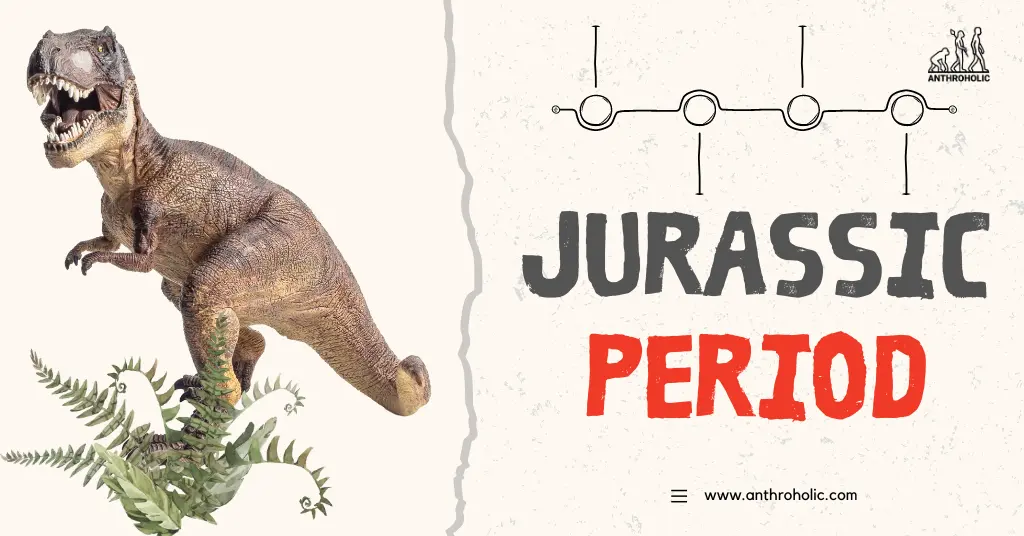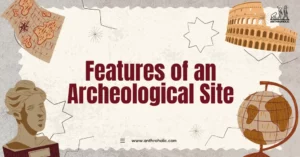AI Answer Evaluation Platform Live Now. Try Free Answer Evaluation Now
Jurassic Period
The Jurassic Period, an era in Earth’s history brimming with intrigue and colossal creatures, is often best known for its association with dinosaurs. This article dives into this fascinating epoch and helps to shed light on its defining characteristics.

Introduction to the Jurassic Period
The Jurassic Period, extending from about 200 million to 145 million years ago, is the middle segment of the Mesozoic Era, sandwiched between the Triassic and the Cretaceous Periods [1]. It has come to popular culture attention, thanks largely to the film franchise “Jurassic Park”, as the era of giants – a time when dinosaurs dominated the land, and marine reptiles ruled the seas.
Climate and Environment
The Jurassic Period saw a warm, humid climate with no polar ice caps, and as a result, sea levels were higher [2]. This led to widespread shallow seas, which in turn led to a significant diversity and abundance of marine life.
Flora and Fauna of the Jurassic
During the Jurassic Period, the world was teeming with an array of unique and diverse life forms, from plants to reptiles, and the famous dinosaurs.
Flora
The plant life of the Jurassic Period consisted largely of:
- Gymnosperms: Predominantly conifers, including ginkgoes and cycads.
- Ferns and horsetails: These were common undergrowth plants [3].
Fauna
The fauna of the Jurassic Period was diverse and included:
- Dinosaurs: This period saw some of the most iconic dinosaurs, like Brachiosaurus, Stegosaurus, and Allosaurus.
- Marine Reptiles: Included ichthyosaurs, plesiosaurs, and the first turtles.
- Early birds: Archaeopteryx, which displayed both reptilian and bird-like features, first appeared in the Jurassic [4].
Table 1 presents a snapshot of some of the representative Jurassic dinosaurs.
| Dinosaur | Approximate Length (Meters) | Diet |
|---|---|---|
| Brachiosaurus | 22 | Herbivore |
| Stegosaurus | 9 | Herbivore |
| Allosaurus | 12 | Carnivore |
Evolutionary Significance of the Jurassic
The Jurassic Period is essential in understanding the course of evolution, primarily because of the following key events:
- Dinosaur Dominance: Dinosaurs became the dominant terrestrial vertebrates after the Triassic–Jurassic extinction event at the start of the Jurassic Period [5].
- First Birds: The appearance of Archaeopteryx, considered by many as the first bird, marks a significant evolutionary milestone [6].
- Mammalian Diversity: The first true mammals also emerged during this period, setting the stage for mammalian dominance in the Cenozoic Era [7].
The End of the Jurassic Period
The Jurassic Period ended with another extinction event, although not as catastrophic as the one that marked the end of the Triassic or the one that would close the Cretaceous [8]. This event led to a substantial loss of diversity among marine invertebrates and ultimately paved the way for the Cretaceous Period.
The Breakup of Pangea
The Jurassic Period was also a time of major geological changes. Most notably, the supercontinent Pangaea began to break up into the separate continents that we recognize today [9]. This breakup had profound impacts on both the climate and the distribution of organisms.
Effects on Climate
As the supercontinent fragmented, new coastlines were created, which increased the extent of shallow marine habitats [10]. Additionally, the formation of the Atlantic Ocean led to changes in ocean currents and global climate patterns, potentially contributing to the warm, humid climate characteristic of the Jurassic [11].
Effects on Biodiversity
The breakup of Pangaea also likely had significant impacts on biodiversity. As the continents separated, populations of organisms were divided, which could lead to the evolution of new species [12].
Human Interest and Cultural Impact
The Jurassic Period, particularly its dinosaurs, has had a significant impact on popular culture. The most well-known example is the “Jurassic Park” franchise, which started with Michael Crichton’s 1990 novel and has since grown to include films, video games, and other media [13]. While these depictions are often scientifically inaccurate, they have helped spark public interest in paleontology and natural history.
Future Research
Despite our increasing knowledge, there are still many unanswered questions about the Jurassic Period. For instance, how did the climate and environmental changes brought on by the breakup of Pangaea influence the evolution and distribution of organisms? What factors contributed to the end-Jurassic extinction event? Further research, particularly with advances in technologies like CT scanning and isotopic dating, will undoubtedly continue to shed light on these mysteries [14].
Conclusion
The Jurassic Period is more than just an era of dinosaur dominance; it represents a critical chapter in the narrative of life on Earth. From the first birds’ emergence to the flourishing of conifers and cycads, it was a time of significant evolutionary innovation and biodiversity expansion.
References
[1] Stanley, S.M., Earth System History. W.H. Freeman and Company, 1999.
[2] Hallam, A., Jurassic Environments. Cambridge University Press, 1975.
[3] Willis, K.J., McElwain, J., The Evolution of Plants. Oxford University Press, 2002.
[4] Chiappe, L.M., Glorified Dinosaurs: The Origin and Early Evolution of Birds. Wiley-Liss, 2007.
[5] Benton, M.J., The Red Queen and the Court Jester: Species Diversity and the Role of Biotic and Abiotic Factors Through Time. Science, 2010.
[6] Wellnhofer, P., The Illustrated Encyclopedia of Pterosaurs. Crescent Books, 1991.
[7] Kielan-Jaworowska, Z., Cifelli, R., Luo, Z., Mammals from the Age of Dinosaurs. Columbia University Press, 2004.
[8] Aberhan, M., Kiessling, W., Fursich, F.T., Testing the role of biological interactions in the evolution of mid-Mesozoic marine benthic ecosystems. Paleobiology, 2006.
[9] Scotese, C.R., A continental drift flipbook. Journal of Geology, 2004.
[10] Hallam, A., Why was there a delayed radiation after the end-Palaeozoic extinctions? Historical Biology, 1994.
[11] Sellwood, B.W., Valdes, P.J., Jurassic climates. Proceedings of the Geologists’ Association, 2006.
[12] Benton, M.J., When Life Nearly Died: The Greatest Mass Extinction of All Time. Thames & Hudson, 2005.
[13] Crichton, M., Jurassic Park. Ballantine Books, 1990.
[14] Maidment, S.C.R., Barrett, P.M., Does morphological convergence imply functional similarity? A test using the evolution of quadrupedalism in ornithischian dinosaurs. Proceedings of the Royal Society B, 2012.




